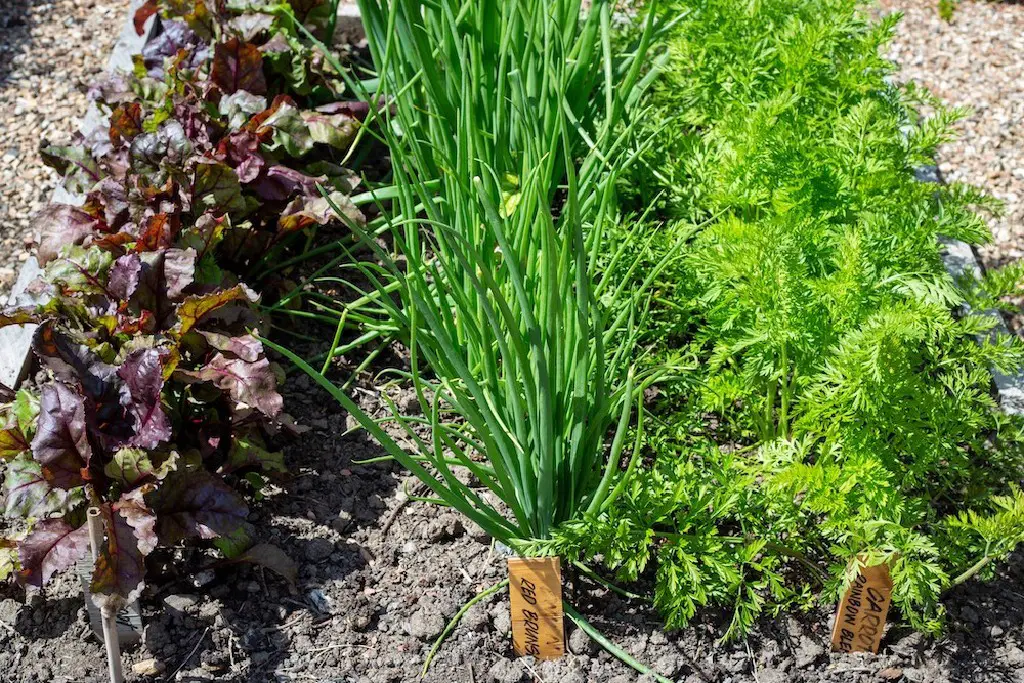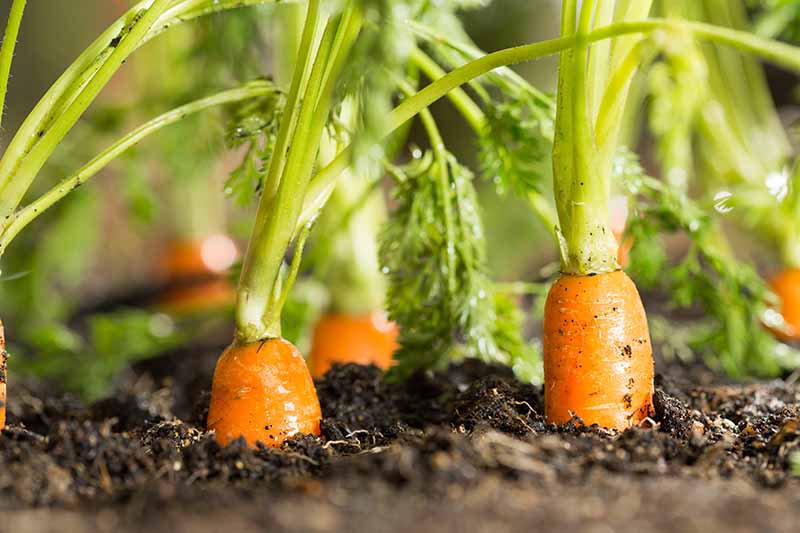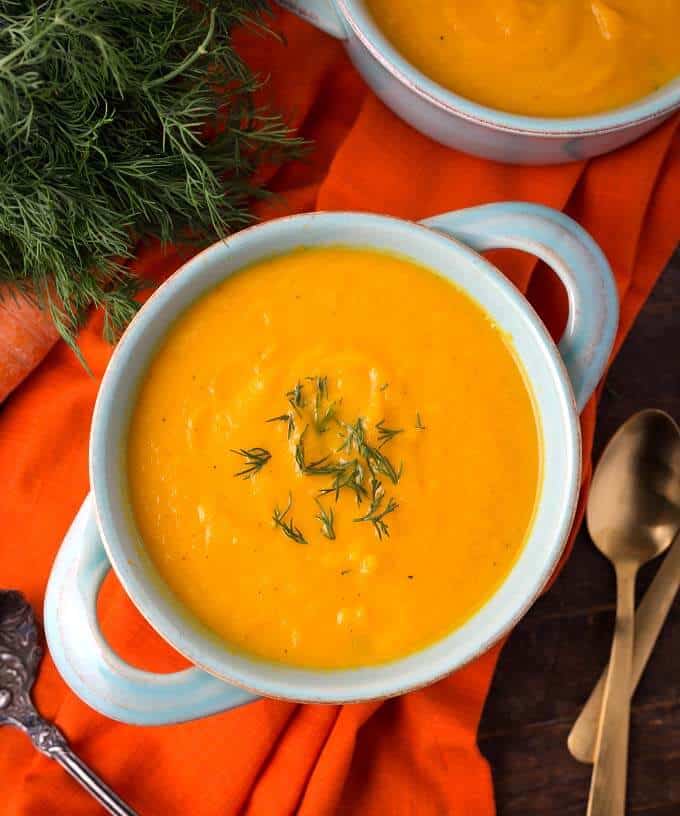Carrots And Dill: The Perfect Companion Planting
Carrots and dill are two popular vegetables that are often grown together in gardens. While they may seem like an odd pairing, carrots and dill actually make great companion plants. In this blog post, we will explore the benefits of companion planting carrots and dill, as well as some tips on how to do it successfully.
Benefits of Companion Planting Carrots and Dill
There are many benefits to companion planting carrots and dill. Here are a few of the most important ones:
- Dill attracts beneficial insects. Dill is a magnet for beneficial insects, such as ladybugs, lacewings, and hoverflies. These insects help to control pests that can damage carrots, such as aphids, carrot rust flies, and cabbage loopers.
- Dill helps to deter pests. The strong smell of dill can help to deter pests, such as carrot flies, from carrots.
- Dill helps to improve soil drainage. Dill has deep roots that help to loosen and aerate the soil. This can help to improve drainage, which is important for carrots, as they do not like to sit in wet soil.
- Dill helps to suppress weeds. The tall, bushy growth of dill can help to shade out weeds, which can compete with carrots for water and nutrients.
How to Companion Plant Carrots and Dill
To companion plant carrots and dill, simply plant them near each other in your garden. You can plant them in the same row, or you can plant dill in between rows of carrots. When planting, make sure to give each plant enough space to grow. Carrots need about 2 inches of space between each plant, and dill needs about 6 inches of space between each plant.
Tips for Companion Planting Carrots and Dill
Here are a few tips for companion planting carrots and dill:
- Plant dill early in the season. Dill grows quickly, so it is best to plant it early in the season, so that it has time to mature before the carrots are ready to harvest.
- Water regularly. Both carrots and dill need regular watering, especially during hot, dry weather.
- Fertilize occasionally. Carrots and dill do not need a lot of fertilizer, but you can fertilize them occasionally with a balanced fertilizer to help them grow strong and healthy.
- Monitor for pests and diseases. Both carrots and dill are susceptible to a few pests and diseases, so it is important to monitor your plants regularly and take action if you see any problems.
Conclusion
Carrots and dill are a great companion planting combination. By planting these two vegetables together, you can help to improve their growth and productivity, and you can also help to deter pests and diseases. If you are looking for ways to improve your vegetable garden, companion planting carrots and dill is a great option to consider.
Carrots and dill are both popular garden vegetables, but did you know that they can also be great companion plants? Dill can help to deter pests from carrots, and its strong scent can also attract beneficial insects like ladybugs and hoverflies. In addition, dill's shallow roots help to aerate the soil and improve drainage, which can benefit carrots.
If you're interested in planting carrots and dill together, there are a few things to keep in mind. First, make sure to plant them in full sun. Dill can tolerate partial shade, but carrots will need at least 6 hours of sunlight per day. Second, space the plants appropriately. Carrots need about 2 inches of space between each plant, while dill can be spaced a bit more closely.
Finally, be sure to water your carrots and dill regularly. Carrots are especially thirsty plants, so they'll need about 1 inch of water per week. Dill is a bit more drought tolerant, but it will still appreciate regular watering.
For more information about carrots and dill companion planting, be sure to visit Gardenia Inspiration. This website has a wealth of information on companion planting, including tips on how to choose the right plants for your garden, how to plant them together, and how to care for them.
FAQ of carrots and dill companion planting
FAQ: Carrots and Dill Companion Planting
Carrots and dill are both popular vegetables that can be grown together in the garden. However, there are a few things to keep in mind when companion planting these two crops.
1. Can carrots and dill be planted together?
Yes, carrots and dill can be planted together, but there are a few potential drawbacks. First, dill is a member of the carrot family (Umbelliferae), and planting them too close together can lead to cross-pollination. This can result in carrots that have a slightly different flavor or appearance. Additionally, dill's strong scent can actually inhibit the growth of carrots.
2. What are some good companion plants for carrots?
Some good companion plants for carrots include:
- Beans: Beans fix nitrogen in the soil, which can benefit carrots.
- Cucumbers: Cucumbers help to repel pests that can damage carrots.
- Lettuce: Lettuce helps to suppress weeds and shade the soil around carrots, which can help to prevent carrot root fly damage.
- Marigolds: Marigolds repel nematodes, which can damage carrot roots.
- Potatoes: Potatoes help to repel carrot root fly damage.
3. What are some bad companion plants for carrots?
Some bad companion plants for carrots include:
- Celery: Celery can harbor carrot root fly larvae.
- Cilantro: Cilantro can stunt the growth of carrots.
- Dill: As mentioned above, dill can inhibit the growth of carrots.
- Fennel: Fennel can stunt the growth of carrots.
- Parsley: Parsley can harbor carrot root fly larvae.
4. How far apart should carrots and dill be planted?
Carrots and dill should be planted at least 12 inches apart to allow for proper growth.
5. What are the benefits of companion planting carrots and dill?
There are a few potential benefits to companion planting carrots and dill. First, dill's strong scent can help to repel pests that can damage carrots. Additionally, dill can help to attract beneficial insects, such as ladybugs, which can help to control pests. Finally, dill can help to improve the flavor of carrots.
Image of carrots and dill companion planting
- Carrots and dill growing together in a garden bed. The carrots are young and green, and the dill is already starting to flower.

- A close-up of a carrot plant with dill growing nearby. The carrot plant is healthy and green, and the dill plant is covered in delicate white flowers.

- A diagram of a carrot and dill companion planting arrangement. The diagram shows how the two plants can be planted together to benefit each other.

- A photo of a farmer harvesting carrots and dill from his garden. The carrots are long and orange, and the dill is tied into bunches.

- A bowl of carrot and dill soup. The soup is creamy and yellow, and it is topped with fresh dill.

Post a Comment for "Carrots And Dill: The Perfect Companion Planting"